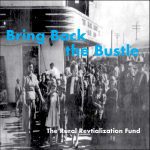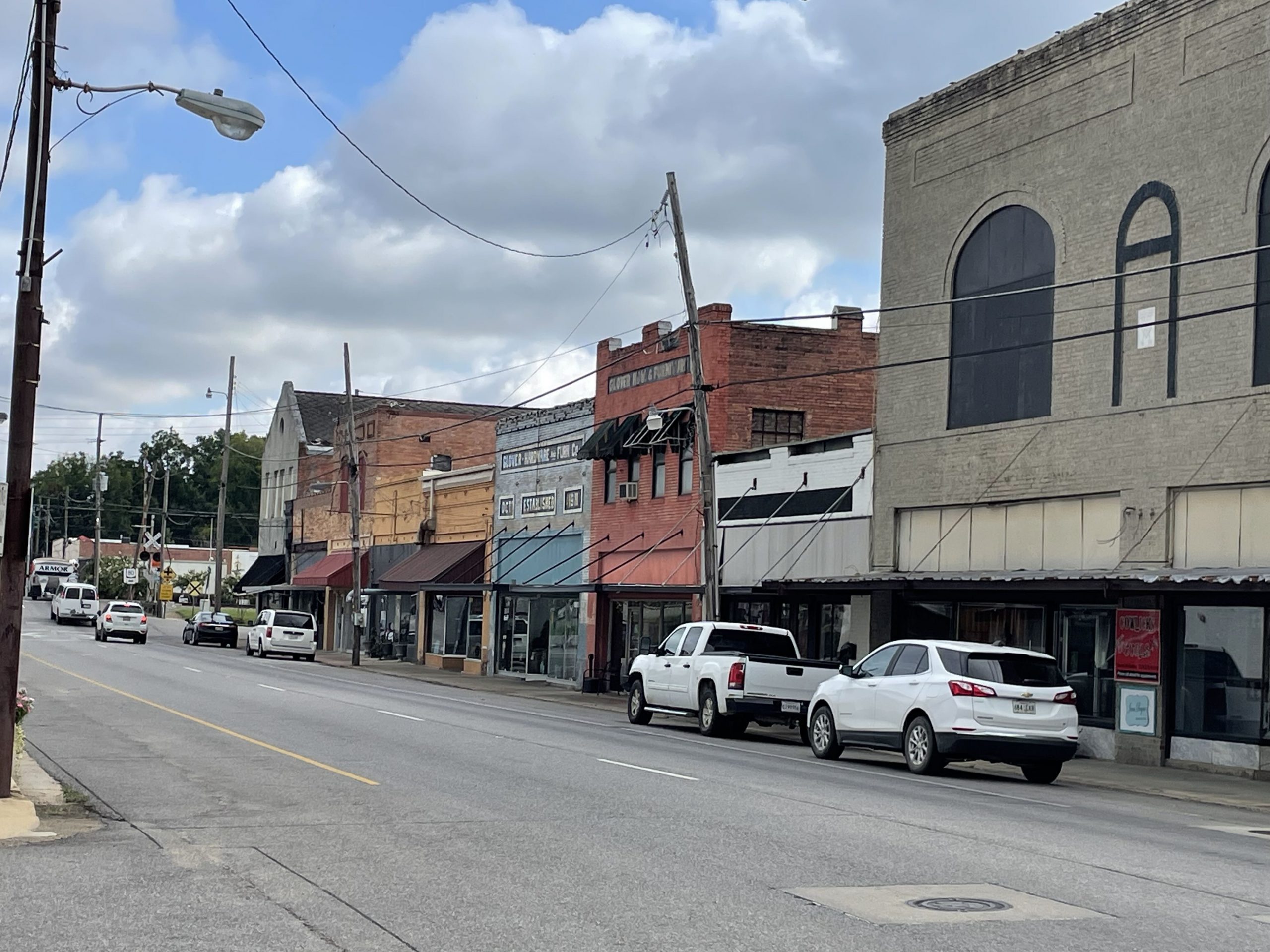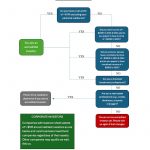
Hello and welcome to the second episode of Bring Back the Bustle, a podcast about revitalizing rural America. I’m Shavon Jones, your host. This episode is about a special tax incentive known as opportunity zones. OZs are all about tax-free appreciation.
So, throughout this episode, listen for those words: “tax-free appreciation” because with tax-free appreciation, you don’t work and you don’t pay taxes on your income.
Those of you who are listening from your job where you provide personal labor and then pay up to 50% in federal and state taxes on your compensation—you’ll want to learn how to opt out of that system and into the tax-free appreciation system.
What are Opportunity Zones and How Do They Work?
Opportunity Zones (OZ) are low-income census tracts selected by government to induce private investment in those communities. So, the government says, hey, we want this community to succeed. And they give it a tax designation that makes investors see green and flock to the area.
Here’s an example that you may recognize. You may live in a nice part of town. But a few blocks away is an underdeveloped, low-income part of town with a curious number of storage facilities.
Some robber barons (or fellow investors, if you wish) built storage facilities near nice condo communities. They got you to put your BBQ grill and golf clubs in there with an $80 storage offer that 6 months later has ballooned to a number that’s worth more than the stuff you’re storing. Sound familiar? Now you know what a traditional OZ investment looked like prior to the OBBBA changes that I’m about to discuss.
In practice, pre-OBBBA, the OZ designation allowed a taxpayer to park capital gains in an OZ Fund and delay paying taxes for five years. After 5 years, the investor was forced to pay capital gains tax on the original investment but not on the appreciation that accumulated during those 5 years. So far, so good, right?
OBBBA Improvements to OZs
I agree, but the OBBBA made it even better, especially for rural OZs. Investors who stay in for 5 years are now treated as if they already paid taxes on 30% of their original investment. So, at the 5-year mark, they pay capital gains tax on only 70% of their original investment (and none of the appreciation that has accumulated over the years). That means they end up waiting 5 years to pay a tax bill that is less than it would have been if they paid it 5 years ago when it was due. Fantastic, yes?
But even that’s not all of the upside. If the investor continues to hold the investment for an additional 5 years (which is a total of 10 years), they can take the appreciation out tax free!
Now, I know what you’re thinking. Ten years is a long time. It is, so I promise to fix that problem at the end of this podcast episode today. I’m going to come back to that problem because it isn’t something that the government should fix. The government is right to require a long holding period in exchange for tax free money, and it is up to private funds to fix that problem if they choose to do so. Most don’t, but The Rural Fund has chosen to fix the holding-period problem for our investors. And we’ll disclose that fix later today.
Why Don’t More People Invest in Rural Areas?
For now though, there’s a second private sector problem that the government also can’t do much about. And that’s the historically low appreciation of rural assets. Remember, traditional OZ Funds are in big cities. That storage facility is around the corner from your condo in Miami, Austin, or Los Angeles, places where property values tend to go up over time. The OBBBA shifted OZs from urban cities to rural towns where there’s greater need for capital investment.
You’ll recall that OZs are all about tax-free appreciation. Despite the huge inducement of tax-free appreciation, most 1031 Exchange investors steer clear of rural assets. {Quick aside: I introduced a new term “1031 Exchange investors.” In a nutshell, a 1031 Exchange investor is someone who has invested in a real estate deal, sold it, and now invests the sale proceeds in a different real estate deal to get special tax benefits like tax deferral. To Kick the can down the road.} These 1031 Exchange investors tend to avoid rural assets.
Why is that? A number of OZ Fund managers were interviewed by the WSJ shortly after passage of the OBBBA. They didn’t believe the OBBBA’s favoritism of rural areas would do much to spur rural investment because of slow appreciation of rural property. Rural real estate usually does not appreciate quickly. So, getting tax-free appreciation in a rural area isn’t usually worth tying your money up for 10 years. (Remember, that’s the holding-period problem that I’m going to fix at the end of the broadcast today.)
How Can We Increase Appreciation in Rural Areas?
But, I think the Fund managers were looking at their own neighborhoods rather than looking at the overall rural opportunity zone market. While the government cannot directly impact land appreciation, market forces can. We understand that at the Rural Fund. That’s why we don’t invest in random rural communities. Instead, we align ourselves with data centers. As you learned in our first podcast episode, data centers are potential anchor businesses around which to build communities. These anchor businesses bring in employees who have demand for services that usually don’t exist in the community upon their arrival. This unmet demand gives investors an opportunity to solve pain points for people with the wherewithal to pay.
Remember, an OZ fund isn’t just the real estate itself. When you buy real estate directly and get a deed, you’re lucky if your property value increases by 50% over a decade. A fund, however, is a security. When you invest in it, you don’t get a deed, you get shares back. And with shares you’re not depending solely on the real estate to appreciate. We eliminate the low appreciation problem by using our real estate to house profitable, operating businesses in rebounding communities. The profits from those businesses increase the value of your shares in the Fund. So with our fund, there’s appreciation in the underlying real estate and there’s potential growth or appreciation in the business that’s operating in that real estate. And, as an owner of our Fund, your shares will represent ownership of both real estate and a number of small businesses. Hold the shares for 10 years and you get the appreciation on those shares tax-free.
How Could the OBBBA Be Better?
What could possibly be wrong with that? Why did I say “The OBBBA Got Opportunity Zones Almost Right.” I’ve talked about improvements the OBBBA made over prior law on opportunity zones. But there’s still a problem with who can invest in opportunity zones and get the tax-free appreciation. The Rural Fund has solved that problem, but not every OZ fund has. So you need to understand that problem.
What about people who don’t have capital gains?
The problem is—without a private sector fix, only investors who are rolling over capital gains from a previous investment can benefit from the OBBBA’s OZ rules. That was the case with the previous urban OZs as well. But the government can and should fix that problem because there’s no tax reason or policy reason to keep it in place. It effectively prevents new investors from getting in on investment opportunities even if they are accredited investors.
If the goal is to spur investment in rural communities, why limit the investment opportunity to old money—to 1031 exchange investors. If new investors, those without capital gains to roll over, are willing to make long-term investments in rural communities why not give them the tax-free appreciation.
Favoring old money is what the pre-OBBBA opportunity zone regulations did. If the Treasury issues new regulations under this new law, eliminating that disparity is something we should all push for during the comment period. That way we can improve more of these economically distressed communities.
From a tax standpoint, new money has been taxed at ordinary income rates. By comparison, capital gains proceeds rolled over from another investment include appreciation that has never been taxed at all. So by favoring old money over new, the government loses revenue, distressed communities miss out on investment, and qualified “new money” investors miss an opportunity to transition from the labor market (where they pay half their money in taxes) into the passive income system.
The Rural Fund will look to educate the Treasury Department on this issue the next time regs are proposed and we’ll ask you to reach out to them as well during their comment period. In the meantime, though, we’ve come up with a fix to let new money investors into our Fund. It is a less than perfect fix because it requires investors who are not rolling over capital gains to have an 11-year holding period instead of a 10-year holding period.
How to Access Your Money Invested in the Rural Fund
But during that 11 years, we’ve arranged for our investors to be able use their shares as collateral for a traditional bank loan. This allows you to access your money at rates that are far lower than the tax you pay if you took a premature dividend or sold your shares. Also, you’re able to stay invested in the Fund and take advantage of future appreciation of the Fund’s assets.
So, let me recap the issues resolved in this podcast episode:
- We fixed the problem of low appreciation in rural areas by investing in operating businesses
- We fixed the problem of the law not letting in investors who don’t have capital gains to roll over by adding a rollover bypass year
- We fixed the holding period problem by permitting loans against your shares
- We even fixed the problem of super high minimum investment requirements in most funds because the Rural Fund requires only a $50,000 buy-in.
Now, you know what they say: You can lead a horse to water, but you can’t force it to drink. So the rest is up to you. I’m Shavon Jones, and I’ll be here next Monday when the topic is historic preservation in rural downtown districts.



No responses yet